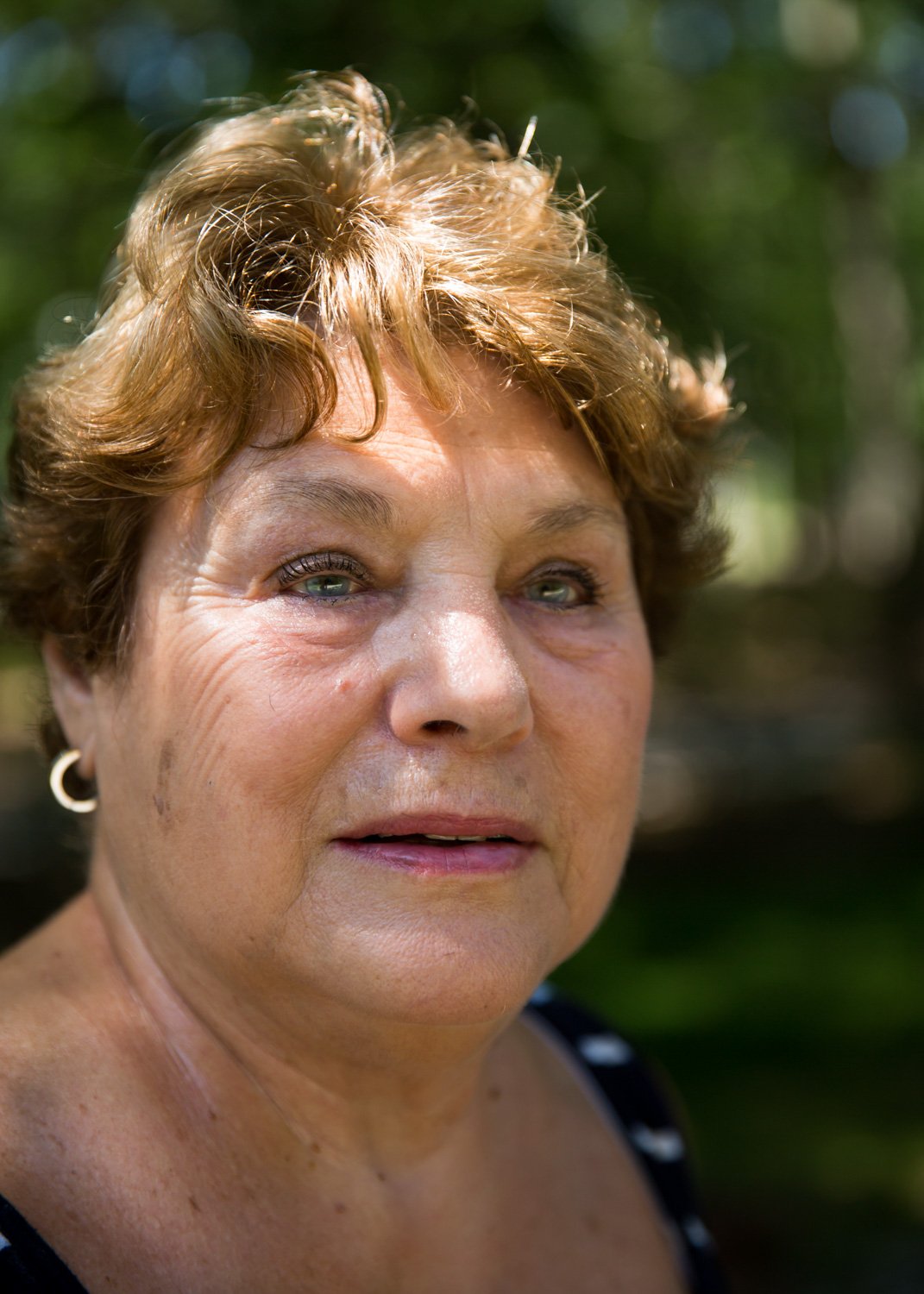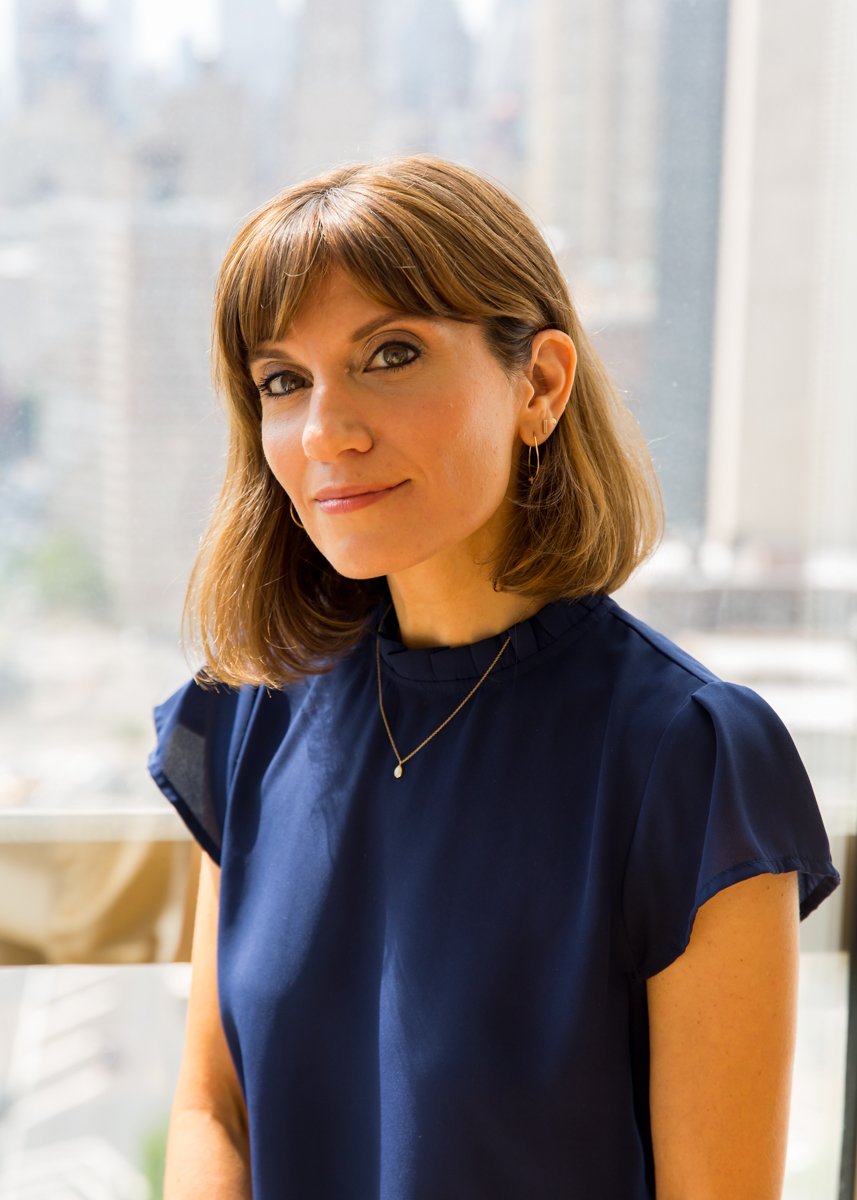Herstory is an extension of my ongoing project “Girlhood: Lost and Found,” which explores the experience young girls face growing up in a world full of preconceived notions of what it means to be a woman. Lost objects in the street coupled with intimate portraits mirror the many ways women lose their sense of identity as they maneuver life as a female. This work began as a personal journey to discover a way back to the person I was before I learned how the world saw me, which initially meant photographing myself. But soon the deep desire to share this process of unlearning took over, and I longed to tell the stories of inspirational females in my life, with the hopes of creating a space for supported truth telling. These images examine attachments formed in early childhood influenced by female stereotypes portrayed in our daily lives. My fascination lies in who we might be, and how we might choose differently if we were absent of them. The discarded items offer the opportunity to question and reflect upon the desires women abandon to conform to these subliminal ideals and pressures as we navigate the culture we live in. How do we reclaim the lost girl and her true nature, betrayed by false truth and unrealistic expectations to fit the restrictive mold accepted by society? It is my hope that like the objects in these images, by tossing unnecessary baggage aside, the external influences that took hold in girlhood can also be left behind, and I believe sharing our stories is a beautiful start.
I interviewed Trish and Alicia just a few weeks apart. I found it fascinating that although they are from very different generations, they both expressed a similar sentiment in regards to womanhood. Both women told me they had always envied and related more to the stereotypical lifestyle of a man.
Trish is a money clip carrying, no make-up wearing, gun shooting, motorcycle riding kind of girl. Although she loves being a woman physically, she has told me that she often feels she should have been born a man because she identifies more with a type of lifestyle that society deems fit for men, but is often looked down upon for women. Trish has felt pressure from both her American and Hispanic cultures and societies alike, to marry a man and have children. She expressed to me that she has “defied traditions by living life on her own terms. I’m 41, never married, no children, have a charity, and run a business. There is nothing more I could want.” By not succumbing to societal expectations most women face in their late 20’s and 30’s to settle down and start a family, Trish has now found the person she wants to spend her life with and will be married in a couple months. She will defy tradition once again however, by asking to be called his “life partner,” not his wife. She believes that waiting and being independent for so long has helped her develop into a more fully formed person. In her own words she explains, “I am not looking for my other half, because I’m completely whole as I am.”
Growing up in the 50’s when the role of “housewife” reigned supreme, Alicia found herself married very young and at home taking care of her three children, as her mother did before her. She grappled with fitting a particular mold, and her internal desires. As a child she was always envious of the freedom that seemed to come with being a boy. She considered herself to be a “tomboy and never liked pretty little things.” She had a rebellious spirit, that showed itself in her decision to leave the church on her own at 12 years old, already craving a life where she could think for herself. Yet here she found herself, struggling to achieve a level of “perfection” a woman of her time was supposed to maintain in the home over anything else. She reflects on having to stay home and clean while her husband took the kids out, and feeling she was expected to show immense gratitude if he made the occasional breakfast or picked up a few groceries. She recalls feeling like, “Why is this solely my job when it is your house too?” In retrospect, Alicia believes the women’s liberation movement took place because in every household there was one woman pushing even just a little.
Eventually Alicia went to work outside of the house. It came with great sacrifice, struggle, and guilt to which mother’s from any generation can relate. Despite the challenges, it gave her a new lease on life, and not just because of the financial independence. “Alicia needed space to be Alicia.” She went on to work for the United Nations for years and served in missions across Africa and Latin America. The 12 year old girl who left the church all those years ago was back, and had found her voice once again.
It is always inspiring to see how every woman carves out her individual path differently while maneuvering the judgments inevitably imposed upon us in regards to marriage, children, and professional lives. Some women will want to stay home with their children, some will not. Some won’t want children at all. All options should be respected, and none should be expected. The more we share our stories, the more comfortably we can make choices from places of honest desire, unfazed by external influences. This is freedom, and this is the heart and hope of “Girlhood: Lost and Found.”
In her own words: “No makeup, no filters, no bullshit.” I’ll add to that: rare, raw, natural beauty inside and out. This best describes my friend Trish, not only in regards to this photo, but how she walks this earth on the daily. Always eager to fearlessly share her authentic self with the world, she is a beacon of light on the quest of unlearning that is “Girlhood: Lost and Found.” To even have to say or believe that showing your face with no makeup or retouching takes courage is twisted in itself, but this is the world we live in and the truth for many. It is refreshing to be in the presence of a woman who is comfortable in her own skin. It soothes and fuels my soul.
“Alicia with the beautiful eyes” as she came to be known amongst her family and friends, was not always as comfortable in her own skin as the woman captured in these photographs. Early in her life she faced negative comments on her physical appearance and capabilities from her mom and husband, which helped create the space for self-judgment to reside within herself, something to which we are all easily susceptible. Alicia considered herself a “tom-boy” and felt she “wasn’t like the other women, everyone else seemed more feminine.” But when she would receive compliments on her eyes, she “felt she might be ok.” So often as women we are taught (intentionally or subliminally) our self worth is directly linked to our physical appearance. Furthermore, at what point did being “pretty” come to define femininity? Without receiving proper recognition and reinforcement regarding her intelligence as much as she was complimented on her eyes, Alicia grew up doubting herself.
In time Alicia would courageously face those insecurities head on. After moving to America as a teenager, she became a young wife and mother of three. Despite a tumultuous marriage, and raising a family with little means, she challenged herself by going to school, getting a degree, and working for and travelling the world with the United Nations. All while raising and providing an education for her three children. She shared with me how she originally signed up for just a single class before applying to get her degree. When the teacher asked why she was there, she admitted she doubted her ability to go to college. With reassurance from her professor in regards to her intellectual capabilities, there was no stopping her.
So yes, she is “Alicia with the beautiful eyes,” but she is also a multi-lingual world travelled professional, a rebel, an intellectual woman of service, a mother, and a survivor. Indeed those eyes are beautiful, but it is the spirit behind them that makes them so. The next time you tell a little girl she is pretty, be sure to also tell her she is smart, brave, and strong.
I had the pleasure of getting to know Stella when she joined my son’s school as a new third grader and quickly became one of his best friends. I was intrigued as I watched this young girl with a sweet, gentle, soft personality in conversation, then run off and go tear it up on the playground and basketball court with all the boys. When she stepped onto the rink I was in awe as she dominated the ice. Stella was one of the only female ice hockey players in her class, and she was unintimidated and shining. A force of nature in a high contact sport surrounded by mostly boys, she was uninhibited and alive with the energy you feel from someone who is aligned with their truth. May Stella always embrace the different sides of her true nature, and inspire all of us to connect with what we truly love and make life choices from that place, uninfluenced by external ideas of who the world thinks we are supposed to be. The year these photos were made, professional female hockey players could earn as little as $2000 per season with the average salary being between $5000-$10,000 per year with no health insurance. Men in the NHL that year were earning over a million dollars annually with the highest paid players earning $14-$15 million. The Women’s National Hockey team recently boycotted the World Championships to protest unequal treatment in the sport regarding issues ranging from pay, equipment, funding, exposure, and media coverage.
“It’s a hard hat not a helmet!!” Mary scolded me in the sarcastic, feisty yet fun-loving way that only she can. We burst out laughing at my ridiculousness, but the comment highlights just how different our worlds are. Mary has been making me laugh like no other for the past 30 years, but it was only last March that I got to do a mini ride along with her on her Atlanta turf. She is a Construction Account Manager who oversees many high profile striping and paving jobs, and one the few women in the incredibly male dominated construction industry. As she so graciously allowed me to interview her for this project, I learned that that same sense of humor I know so well, has also become a tool she uses on the job. I asked her to tell me some of the biggest challenges she faces as a female in her field, and it was of no surprise that the assumption your contact info can be used to call you for dinner and drinks instead of work was an issue. She often uses her trademark humor as a tool to deflect unwanted flirting, and feels it helps put men in the “friend zone,” claiming they react differently when a woman is funny. Strict boundaries must be set from the beginning. We also discussed the precarious balancing act that must be performed between being modest enough to avoid making a man feel inferior, while also being assertive enough to validate your knowledge and experience. She acknowledges there is a benefit to being a woman in construction because it gets your foot in the door faster, but once you are there you are fighting the fact that people automatically assume you don’t know what you are talking about, so there is much more to prove. “You have to play the game, assert yourself but also soft pedal it so you are not too overbearing.” Mary learned early on that she had to master the industry, or she would get “chewed up and spit out” quickly. She has certainly worked hard, paid her dues, and has helped shape the landscape of Atlanta. I’m proud of my friend, and I hope the time will come someday soon that when she meets new clients, the first thing she has to hear won’t be “Oh you must be married to the owner!’”
It takes great courage to make change. Sometimes it is our most terrifying moments that propel us forward, but when we make it through the storm, the rainbow that was brewing inside all along makes itself clear. And we shine brighter, and live more colorfully than we could have ever imagined possible when we were in the dark. I witnessed this kind of transformation first hand in my friend Hope’s journey, as she reclaimed her life and power after finding the courage to leave an unhealthy relationship, which changed the course of her life both personally, and eventually, professionally.
I used to sit in Hope’s childhood bedroom while she would do my makeup when we were 12 years old in our hometown. Years later in our 20’s, I would find myself sitting in her makeup chair in NYC while she got me camera ready for a magazine shoot, as she had became a professional makeup artist. Now here we were, me behind the camera, honored and excited to be taking the headshot that would represent her new beginning as a therapist/licensed clinical social worker launching her own private practice. After many years of performing that unique type of talk therapy you get while in the hair and makeup chair, Hope went back to school at the age of 38 and worked tirelessly for years to become a LCSW. She has spent the last number of years as an oncology social worker in a hospital, and a therapist in a mental health clinic and institute, and now for her latest leap forward: starting her private practice at the age of 45. If you ever need a reminder that it is never too late to begin again, look no further. I never truly knew what grace was until I witnessed it in Hope as she overcame overwhelming hardship. Hope is a true example that you can find your calling at any phase in life, even if it seems impossible, and even if it is calling out from deep underneath layers of fear, pain, and struggle.
As scary as it may seem, while talking after our photo session had ended, Hope shared her thoughts on how our most trying times can offer the opportunity to begin again. “A very hard experience in my life woke me up to realize that I needed to do whatever I could to take my power back, go after all my dreams, and be the guide of my own life. To do what I wanted to do, and empower other women to do so, and know that it’s never too late. No one can ever take you down unless you don’t do anything to take your power back. And sometimes it’s really hard, but even in the hardest of times, if there is a spark, even just a tiny little spark in your life, then you have everything you need to begin. You do in fact have what you need inside yourself.” In the true spirit of lost and found, Hope shared how after losing herself in a toxic relationship, what she found in having the courage to leave became the catalyst for the greatest change in her life. “When you can’t see who you are in the mirror everyday, that’s a wake up call. That’s when you know it’s time to move on.” Hope went on to share that she does not feel the need to live life as a linear woman, checking off all the age and gender appropriate boxes expected by society, especially when it comes to marriage or motherhood. She prefers to live life outside of the box. She ended our conversation by saying, “It’s ok to be a late bloomer, it’s ok to let your freak flag fly, it’s ok to live outside the box. If you are outside the box you are tapping into a whole other world that people are too afraid to tap into. I’d rather be a bowl of rainbow sprinkles than some vanilla ice cream, and that’s what keeps me going. When I see the pure joy in a toddler on the street eating rainbow sprinkles on a cone, I just love it, and I tune into that joy. You have to find inspiration in the little things in life. You just have to find your joy. Rainbow sprinkles remind me of all the many beautiful colors that I am.”


























